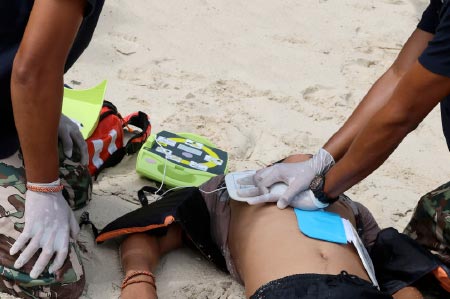Automated External Defibrillators
According to OSHA there are 220,000 victims of sudden cardiac arrest per year in the United States. Of these, about 10,000 sudden cardiac arrests occur in the workplace. Are you prepared to save someone’s life in these instances?
Waiting on emergency personnel to arrive only results in a 5-7% survival rate.
Studies with immediate defibrillation have shown up to 60% survival rate one year after sudden cardiac arrest.
An Automated External Defibrillator (AED) is an
electronic device designed to deliver an electric shock to a victim of sudden cardiac arrest. Ventricular fibrillation may be restored to normal rhythm up to 60 percent of the time if treated promptly with an AED, a procedure called “defibrillation.”

When to use and AED:
-
A person could be in cardiac distress if they suddenly collapse or are found unconscious.
-
First, confirm the person is unconscious. Check for responsiveness by shouting at or gently shaking or pinching the person.
-
If the person does not respond, call 911. If you are not alone, instruct a specific person to call 911.
-
Check the person’s airway for obstructions.
-
If the person is not breathing, instruct a specific person to begin CPR while you get the AED, or vice versa. If you are alone, begin CPR first.
-
CPR should be done for 2 minutes, with a ratio of 2 breaths per 30 chest compressions.
-
Use the AED after one complete cycle of CPR.
Safety can distinguish you…Lack of safety can extinguish you!!
Download flyer: STOTW_537_Automated External Defibrillators.pdf (850.31 kb)
Download Spanish flyer: STOTW_537_Automated External Defibrillators_esp.pdf (851.05 kb)

